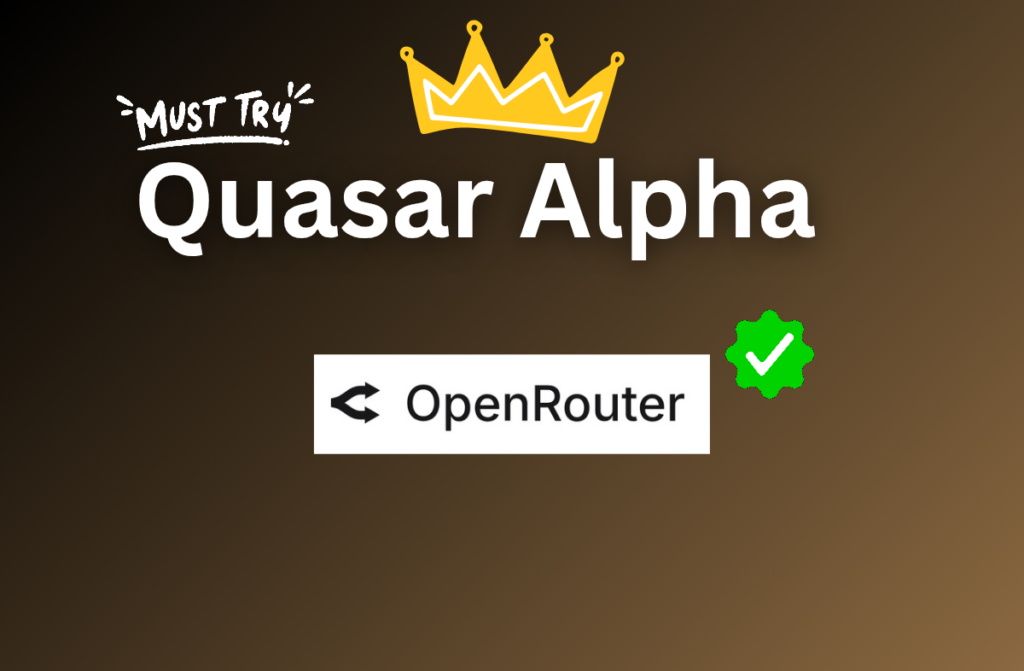
A new AI model called Quasar Alpha just appeared on OpenRouter with impressive capabilities.
It quickly caught the attention of AI enthusiasts and developers worldwide.
What makes this model special? Who created it? And how does it compare to other leading AI models? Let’s dive in and explore this exciting new addition to the AI landscape.
What is Quasar Alpha?
Quasar Alpha is described as a “pre-release long-context foundation model” that was quietly made available through OpenRouter, a platform that connects users to various AI models.
What makes this release particularly interesting is the mystery surrounding its creator.
While OpenRouter says it comes from one of their partner labs, technical evidence strongly suggests it may be from OpenAI, though some believe it could be from a smaller lab called SILX AI.
Key Features of Quasar Alpha
Massive 1 Million Token Context Window
Perhaps Quasar Alpha’s most impressive feature is its enormous 1 million token context window. This means the model can process hundreds of pages of text in a single session – far beyond what most other AI models can handle.
This huge context window opens up exciting possibilities for:
- Analyzing entire research papers or books in one go
- Maintaining context in very long conversations
- Working with extensive code bases without losing track
Strong Coding Abilities
Quasar Alpha appears to be specially optimized for coding tasks. Early users report that it excels at:
- Generating clean, logical code across multiple programming languages
- Following coding instructions accurately
- Solving complex programming problems
- Helping identify and fix bugs
Its combination of strong coding skills and the massive context window makes it particularly valuable for developers working on large, complex projects.
Benchmarks and Performance
How does Quasar Alpha stack up against other leading AI models? Here’s what we know so far:
| Metric/Aspect | Quasar Alpha Performance | Comparison Models |
|---|---|---|
| Aider Polyglot | 55% better | o3-mini-medium, DeepSeek V3, Claude 3.5 Sonnet |
| Coding Quality (Eval) | Top 5 (87.92%) | Claude 3.7 Sonnet (87.59%), Gemini 2.0 Flash Lite (88.26%), ChatGPT-4o (90.96%) |
| User Reviews | Generally positive for coding and instruction following, some mixed opinions exist | Claude 3.5/3.7 Sonnet, Gemini 2.5 Pro, DeepSeek V3 |
The Mystery: Who Created Quasar Alpha?
One of the most intriguing aspects of Quasar Alpha is the question of who developed it. There are two main theories:
Evidence Pointing to OpenAI:
- API Metadata: Quasar Alpha’s generations use an upstream ID with the prefix “chatcmpl-“, which has only been observed in OpenAI models like ChatGPT and GPT-4.
- Tool Call ID Format: The format of tool call IDs used by Quasar Alpha matches the pattern used by OpenAI, not those used by Google or Mistral.
- Response Style: Many users note that Quasar Alpha’s style resembles that of GPT-4o.
- Specific Tokenizer Bug: Quasar Alpha has the exact same bug when processing a specific Chinese phrase that was previously found in GPT-4o and other OpenAI models.
- Clustering Analysis: Technical analysis using bioinformatics tools shows Quasar Alpha clusters closely with OpenAI models, particularly GPT 4.5 Preview.
The SILX AI Theory:
Some believe Quasar Alpha might come from a smaller lab called SILX AI, mainly because:
- SILX AI has models named with the “Quasar” prefix on Hugging Face.
- A user claiming to represent SILX AI has been active in discussions about Quasar Alpha on OpenRouter’s Discord server.
- Some argue it would make more sense for a smaller lab to use OpenRouter for testing a new model.
However, the technical evidence pointing to OpenAI is significantly stronger.
How to Use Quasar Alpha
Currently, Quasar Alpha is available for free through the OpenRouter platform. Here’s how you can start using it:
- Create an account on OpenRouter if you don’t already have one
- Select Quasar Alpha from the available models
- Start interacting with the model for your coding needs or other tasks
The model has already been integrated with popular development environments like VS Code and RooCode, making it especially convenient for coding tasks.
Keep in mind that since this is a pre-release model, there’s uncertainty about its long-term availability or if it might eventually become a paid service.
What This Means for the Future
The release of Quasar Alpha represents an exciting development in AI, particularly for tasks requiring processing of extensive text or code. Its massive context window opens up new possibilities for research, enterprise document analysis, and complex coding projects.
If Quasar Alpha maintains its strong performance and remains accessible, it could significantly impact how developers work and potentially lower barriers to entry for new coders.
The “stealth” release strategy also raises interesting questions about how AI models might be tested and introduced in the future, possibly allowing for more unbiased feedback before official launches.
Conclusion
Quasar Alpha has made a quiet but impressive entrance into the AI landscape. With its massive context window, strong coding abilities, and excellent instruction following, it represents a significant step forward in AI capabilities.
While the mystery of its origin adds an intriguing element to its story, what’s clear is that Quasar Alpha is a powerful new tool that’s already showing great promise for developers and AI enthusiasts. Whether it’s truly an OpenAI creation or comes from elsewhere, it’s definitely a model worth watching as it continues to develop.
As the AI field continues to evolve at a rapid pace, Quasar Alpha stands as yet another example of how competition and innovation are driving incredible advances in what these systems can do.